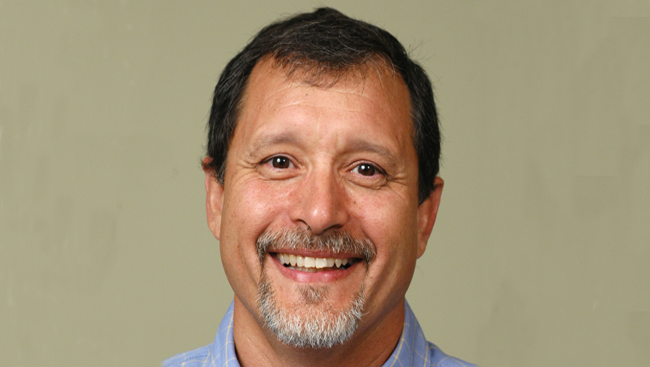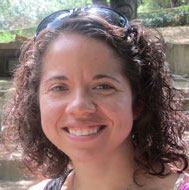Julio Ramirez: Training Tomorrow’s Scientists
- Published20 Sep 2012
- Reviewed20 Sep 2012
- Author Jennifer Carr
- Source BrainFacts/SfN
At Davidson College, where he studies brain injury, Ramirez works closely with undergraduates and leads national efforts to enhance undergraduate neuroscience education and increase opportunities for underrepresented groups in the sciences. He received the Presidential Award for Excellence in Science, Mathematics, and Engineering Mentoring in 2009 and the Society for Neuroscience’s Award for Education in Neuroscience in 2011.

When Julio Ramirez asked his eighth grade teacher Sister Mary Norbert if he could lead a class discussion about science, little did he know he’d go on to make a career educating the next generation of neuroscientists.
At Davidson College, where he studies brain injury, Ramirez works closely with undergraduates and leads national efforts to enhance undergraduate neuroscience education and increase opportunities for underrepresented groups in the sciences. He received the Presidential Award for Excellence in Science, Mathematics, and Engineering Mentoring in 2009 and the Society for Neuroscience’s Award for Education in Neuroscience in 2011.
Minority populations are underrepresented in the sciences in the United States, despite being the most rapidly growing segment of the population. Why do you think this is?
We have a pipeline problem. Underrepresented groups come into college as interested in the sciences as the majority, but over time we lose them. To stop the leaky pipeline, we need to create a culture and environment within the sciences that will enable us to not just attract underrepresented groups, but keep them once they get into the field.
One of the ways we’ve tried to achieve this is through the SOMAS (Support of Mentors and their Students in the Neurosciences) program, which offers grant money to underrepresented minorities in the sciences. Rather than shuttling the students off to a major research institution to conduct research, the program allows students to engage with a mentor at their home institution. This way, we are promoting the growth of science within the student’s university and helping the student to become a young scientist.
Why is it important to have minorities represented in the sciences?
Bringing individuals into the sciences from a wide range of backgrounds will encourage the growth of the field in ways that we might not have anticipated. It is absolutely critical to have diverse ways of viewing and trying to tackle problems. With a diverse group, you are more likely to have a greater impact and greater opportunity for success.
As a society, we need to make sure that we fully fund the kinds of programs that will enable future generations of students from all backgrounds to make the kinds of contributions to the scientific discovery that we need.
What excites you most about neuroscience education?
Twenty years ago we taught undergraduates about science by having them conduct timeworn and prepackaged experiments. Now we have kids doing innovative, inquiry-based learning, where they are asking a question that hasn’t been asked before and actually trying to conduct research in a way that previously could never have been possible for an undergraduate.
What is the greatest challenge neuroscience education faces today?
The greatest challenges we face today continue to be finding funding to do the innovative work we would like to do in the classroom and laboratory. When cuts to education initiatives are made, it doesn’t just affect next year’s bottom line. When we talk about education cuts, we are talking about an entire generation of students that are going to be shortchanged. So, we’re looking at impacts that last 10-25 years.
I really do hope the U.S. Congress will act in such a way that we can instill continued interest in the sciences and the innovative thinking we need within colleges and universities that will ultimately lead to a stronger economic engine in the future.
What do you study in your lab?
One of the primary threads of research going on in my laboratory has to do with the brain’s ability to reorganize itself in response to injury. We are particularly interested in isolating the factors that might be important to promote learning and memory recovery following injury.
At any point in time, I have 4-8 undergrads working in my lab. In total, I’ve worked with over than 130 undergrads in the lab. Many have gone on to become scientists and physicians; others have gone onto become informed citizens.
What advice do you have to students who are interested in neuroscience but are not sure where to turn to find mentors?
You have to be proactive. I recommend a student that is interested in neuroscience go ahead and seek out the individual who is doing research that is of interest to them. What students will find is that the majority neuroscientists are more than delighted to spend time chatting with a student about what the future might be for the student within the field.
CONTENT PROVIDED BY
BrainFacts/SfN
Also In Archives
Trending
Popular articles on BrainFacts.org


















